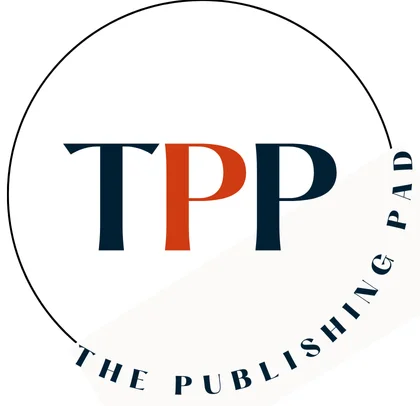Staring at a Blank Page? You’re Not Alone.
You have this incredible story idea in your head, maybe it’s a sweeping fantasy saga, an emotional romance, or a story rooted in your personal experience. But every time you sit down to write, the blinking cursor just stares back at you, taunting you with the silence.
If this sounds familiar, you’re not alone.
Thousands of aspiring writers feel overwhelmed at the thought of writing a novel. The idea is there, but the process? It feels like a mountain. The good news is, you don’t need to have everything figured out to start writing your book. You just need the right roadmap, and that’s exactly what this guide is for.
Let’s take it one step at a time.

Why Writing a Novel Feels So Hard And Why You Can Do It
Writing a novel is often romanticized as this magical, inspired endeavour, but in reality, it’s a mix of creativity, structure, discipline, and self-doubt.
Here’s why it feels so difficult:
- Perfectionism: You want it to be good, so you never start.
- Overwhelm: The idea of writing 80,000 words? Terrifying.
- No clear process: You know you want to write, but not how.
But here’s the truth: you can absolutely write a novel, even if you’ve never written one before. Every great writer started with a blank page. The difference is: they took the first step and kept going.
Pro Tip: “You don’t need to write the right words, you just need to write the words.”
The First Step: Get Clear on Your “Why”
Before you even plot your novel, ask yourself: Why do I want to write this?
- Is it a lifelong dream?
- Do you want to be published?
- Are you writing for therapy, joy, legacy, or income?
Getting clear on your “why” will shape the type of novel you write, the time you dedicate, and your motivation when things get tough.
How to Start a Book: Pre-Writing Essentials
1. Brainstorm Your Big Idea
Every book starts with an idea, but not every idea is ready to become a novel. Ask yourself:
- What genre does this idea belong to?
- Who would read it?
- What emotional reaction do I want to evoke?
Use tools like mind maps, writing prompts, or even a simple “what if” question to develop your concept.
2. Write a One-Sentence Summary (Story Concept)
This is your story’s elevator pitch. It should capture the core conflict and character.
Example: “A reclusive teenager discovers she’s the heir to a secret magical kingdom and must save it from a forgotten war.”
If you can’t summarize your novel in one sentence, you may need to clarify your story’s direction.
3. Decide on Point of View and Tense
Some questions to consider:
- First-person or third-person?
- Past tense or present tense?
- Who is telling the story, and how close are we to their inner world?
First-person offers intimacy; third-person can offer perspective and flexibility. Pick the POV that best fits your narrative style.

(teenager-making-notes_Image by freepik)
Outlining Your Novel: Are You a Plotter or a Pantser?
Some writers plan every scene before they write a word (Plotters). Others discover the story as they write (Pantsers). Most writers fall somewhere in between.
We recommend a hybrid approach: enough structure to guide you, but enough freedom to discover your story.
Tools That Help:
- Save the Cat Beat Sheet
- Scrivener for scene organization
- Notion or Trello for visual boards
- The Three-Act Structure for Story Mapping
💡 Think of your outline as a compass, not a GPS.
How to Write a Novel for Beginners: Step-by-Step
Step 1: Create Your Characters
Your characters are your story. Readers don’t follow plots; they follow people.
Make sure your main character has:
- A desire (What do they want?)
- A flaw (What holds them back?)
- A change (How will they grow?)
Use character profiles, backstory exercises, or role-play interviews to flesh them out.
Step 2: Build Your Plot
Map out key turning points:
- Beginning (The hook + setup)
- Middle (Confrontation, rising stakes)
- End (Resolution, transformation)
If you’re not sure how to build this, Reedsy’s plot guide offers a great template for beginners.
Step 3: Design a Writing Routine
Books get written in small, consistent increments.
- Set a word goal (e.g., 500–1,000 words/day).
- Choose your best writing time.
- Track progress in a spreadsheet or app.
If writing daily feels too rigid, try writing sprints or weekend blocks. Just be consistent.
Helpful Tools: Pomodoro timer, Cold Turkey blocker, Google Docs or Notion
Midway Support: Don’t Go It Alone
At The Publishing Pad, we know how tough it is to start writing your first book. That’s why we created a free eBook, “10 Steps to Finally Start Writing Your Book,” to help aspiring authors like you go from idea to draft with confidence.
You’ll get a proven step-by-step writing system and practical tips for breaking through mental blocks.
Writing Your First Draft Without Judging It
This is where many writers stop: the messy, awkward, uncertain first draft.
Here’s the thing—your first draft is supposed to be bad. Its only job is to exist. You can’t revise a blank page, but you can polish a rough one. Permit yourself to write badly, inconsistently, even cringeworthily. You’re shaping clay, not sculpting marble yet.
Tips for First Draft Success:
- Don’t edit as you go. Save revisions for later.
- Set a time limit, not a word limit. Try 25-minute sprints.
- Use placeholders. Can’t think of the perfect name or scene? Type “[NAME]” or “[SCENE TBD]” and move on.
- Track your wins. Celebrate every finished chapter, no matter how rough.

How to Write a Romance or Fantasy Novel: Genre-Specific Tips
Genre influences not only what you write, but how you write it. Whether you’re exploring magical kingdoms or the intricacies of human connection, understanding your genre’s expectations will help your story resonate.
How to Write a Romance Novel
Romance is about emotional depth, chemistry, and satisfying arcs. It’s not just about love, it’s about characters evolving because of love.
Key Romance Elements:
- A central love story that drives the plot
- Character-driven tension (conflict between desires, fears, and goals)
- Tropes (enemies-to-lovers, friends-to-lovers, forbidden love)
- A satisfying ending (usually happily-ever-after or happy-for-now)
Explore genre conventions on the Romance Writers of America
How to Write a Fantasy Novel
Fantasy invites you to build entire worlds, complete with their own rules, cultures, and conflicts. But that doesn’t mean dumping three chapters of history in chapter one.
Fantasy Must-Haves:
- Worldbuilding: Create rules (magic, politics, geography) that serve your plot, not distract from it.
- Internal logic: Even dragons need rules.
- Clear stakes: What happens if the protagonist fails?
Avoid exposition overload by revealing world details organically through dialogue, action, or character perspective.
How to Write a Novel Title in an Essay or Submission
Formatting your novel’s title correctly can feel oddly intimidating, especially if you’re referencing it in essays, synopses, or publication submissions.
Here’s how to format your title based on the style guide:
MLA & APA Guidelines:
- Italicize book titles: The Great Gatsby.
- Use title case (capitalize major words).
- Avoid quotation marks for standalone books.
If your novel is unpublished, use quotation marks for clarity in general writing (e.g., “My novel, ‘Shadows of Fire’, explores…”), but default to italics for professional or academic references.
For deeper formatting rules, check Purdue OWL MLA Style Guide
From Draft to Published Book: What Comes Next?
You wrote your draft. Now what?
This is where the real writing begins: revision, editing, and preparation for publishing.
Revise Your Draft:
- Let it rest for 1–2 weeks.
- Read it through once without editing.
- Look for big-picture issues: pacing, character motivation, plot holes.
Edit Like a Pro:
- Use tools like Grammarly or ProWritingAid.
- Hire a freelance editor or swap with critique partners.
- Trim filler, tighten dialogue, and refine narrative voice.
Choose Your Publishing Path:
- Traditional Publishing: Requires query letters, agents, and submissions.
- Self-Publishing: Full creative control and higher royalties, but also more work.
- Hybrid Publishing: A mix of both.
Ultimately, the best publishing path for you depends on your goals. If you’re still weighing your options and trying to decide whether traditional or self-publishing is the right fit, we can help.

Need Help Finishing Your Book? We’ve Got You.
At this point, you may feel both energized and overwhelmed, which is totally normal. If you need a helping hand, a roadmap, and some real-world motivation…
Download our free eBook: “10 Steps to Finally Start Writing Your Book” by The Publishing Pad.
You’ll learn a proven step-by-step system for writing your first novel, including how to build consistency and beat procrastination. You can write your book. We’ll help you start.
Conclusion: You Don’t Have to Be Perfect, Just Be Persistent
Writing a novel isn’t about waiting for inspiration; it’s about creating a system, showing up consistently, and allowing yourself to grow through the process.
Whether you’re starting with nothing but a genre idea or polishing your fifth revision, every word you write brings you closer to your goal.
So, what’s stopping you from writing the first sentence of your story today?
❓ FAQs: How to Write a Novel
Q1: How do I start writing a novel with no experience?
Begin with a basic concept and a character. Don’t worry about perfection, just write. Use beginner-friendly frameworks like the three-act structure to guide you.
Q2: How long should a novel be?
Most first-time novels fall between 70,000–90,000 words, though fantasy and historical fiction can stretch longer.
Q3: Can I write a novel in a month?
Yes. NaNoWriMo (National Novel Writing Month) proves it’s possible to write 50,000 words in 30 days. But remember, editing and refining will still take time.
Q4: What are some mistakes new writers make?
- Over-editing the first draft.
- Starting without an outline.
- Writing for trends instead of passion.
- Avoiding feedback or critique.
Q5: Do I need to outline my book first?
No, but it helps. Even a loose structure can keep you focused and prevent writer’s block.
Q6: What software do most novelists use?
Popular tools include Scrivener, Google Docs, Notion, and Word. Choose what feels intuitive for your workflow.
Q7: Should I worry about grammar while drafting?
No. Focus on storytelling first. Grammar can be cleaned up during revisions with tools like Grammarly.

